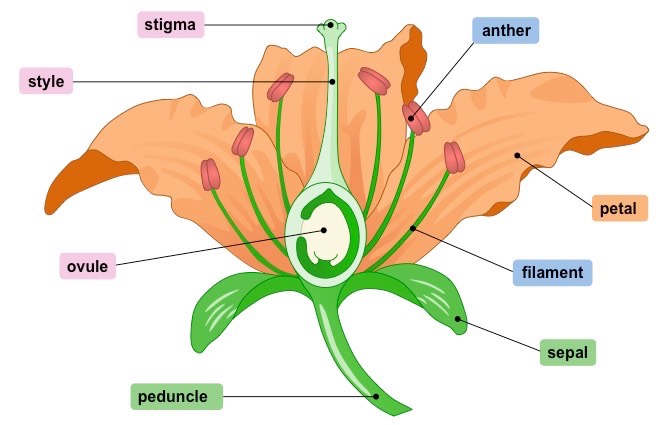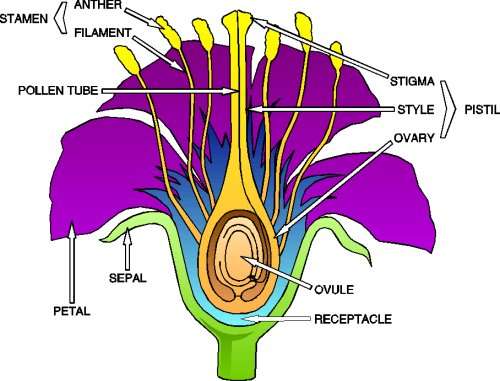
Fertilization in pollen grains is the process by which a pollen grain attaches itself to the stigma of a female flower, releasing its male gamete (sperm cell) which then travels down the female flower’s style to the ovary and fertilizes the egg. This process is critical to the reproductive cycle of flowering plants and is the means by which genetic material from two different parents (male and female) is combined to form a new individual.
Male gametes are formed through a process called spermatogenesis. This process takes place in the seminiferous tubules of the testes, where sperm cells are produced from spermatogonia, the stem cells that reside in the testes. During spermatogenesis, the spermatogonia divide by mitosis to produce primary spermatocytes. The primary spermatocytes then undergo meiosis to produce secondary spermatocytes, which divide one more time to form spermatids. The spermatids undergo further maturation to form the mature sperm cells, or spermatozoa.
Embryo formation in flowers begins with the fertilization of the egg by a sperm cell. The fertilized egg then undergoes a series of divisions and cell differentiation to form a zygote. The zygote divides to form two cells, then four cells, and so on, until a globular or oval-shaped structure called an embryo sac is formed. This embryo sac contains a single diploid cell, the egg cell, and three haploid cells, the two polar nuclei and the central cell. The central cell divides to form a two-celled embryo, which eventually develops into the seed. The embryo sac is then surrounded and protected by the ovary wall, forming the seed.
Endosperm is a nutritive tissue that is formed during seed development in flowering plants. It is found between the embryo and the seed coat and serves as a source of nutrition for the developing embryo. Endosperm is composed of a variety of cells that are filled with nutrients such as proteins, carbohydrates, lipids, vitamins and minerals. These nutrients are essential for the growth and development of the young plant. The endosperm also helps protect the embryo from environmental stresses, like drought and cold temperatures. Once the seed germinates, the endosperm is consumed by the plant, providing it with the essential nutrients for growth and development.

Fertilization, Reproduction, endosperm
